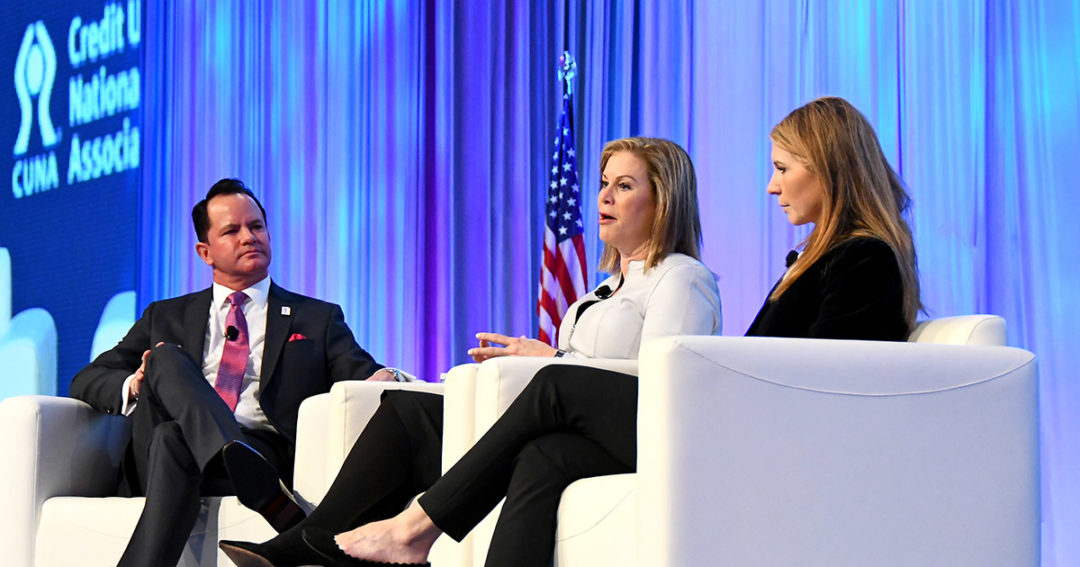
Credit unions a ‘bridge’ to constituents
Analysts Stephanie Cutter and Nicolle Wallace share insights into the political arena.
Credit unions should take advantage of the fact that they serve many people in legislators’ districts, political strategists Stephanie Cutter and Nicolle Wallace told CUNA Governmental Affairs Conference (GAC) attendees Wednesday.
Troy Stang, CUNA Board chair and president/CEO of the Northwest Credit Union Association, moderated the discussion, which addressed the presidential election, today’s contentious political environment, the importance of social media, and more.
“You’re owned by the people you serve,” Cutter says. “You can’t say that enough. We all assume representatives know more than they do. Tell them again and again that you’re different from other financial institutions.”
Credit unions are a bridge to legislators’ constituents, Wallace adds. “They need you more than you need them. Tell them how you’ve helped people and pressure them to be on the side of their communities and those who matter most—your members.
“They need you as a bridge,” she says. “Walk into their offices with swagger and confidence knowing they need your seal of approval.”
Cutter and Wallace addressed a wide range of issues, including:
- The divisive political environment. "The last three years have been eventful, to say the least, and we’re in the middle of a contentious primary,” Cutter says. “Where we are today is a long time brewing."
The financial crisis of 2008 fueled Americans’ financial anxiety, leading to the rise of the Tea Party and President Trump, who made many voters feel “heard,” says Wallace.
“Financial stability is priority 1 through 7,” she says, adding that John McCain’s presidential bid in 2008 failed in large part because he struggled to articulate his plan to address the financial crisis that began that year.
- The Democratic primary. Early favorites included Beto O’Rourke, Cory Booker, and Kamala Harris. At that time, Bernie Sanders wasn’t part of the conversation.
“Voters are demanding change,” Wallace says. “It’s a similar phenomenon with what happened with Trump. People feel that Bernie sees and understands their financial anxiety.”
It’s also possible that no candidates will have a majority of delegates, which will result in a contested primary, Cutter says. “People believe the system is rigged now—just think what would happen if the primary is contested.”
- The coronavirus. The one upside of the coronavirus: It lets people see how leaders respond to a crisis.
- Social media. The use of this essential tool is increasingly sophisticated and ever-changing, Cutter says.
“It’s all about who you can persuade and how they get their information,” she says. “Candidates must understand how voters use these tools.”
Wallace is more skeptical about social media. “It’s more bad than good. It distorts reality. No campaign can run a TV commercial that has a lie, but Twitter doesn’t have that rule. Social media should be under the same rules governing media.
“It’s a crime against truth that it’s not regulated.”
- Key election states. If not for 70,000 votes in Pennsylvania, Michigan, and Wisconsin during the 2016 election, Hillary Clinton would be president.
Wisconsin and Arizona will be key battleground states in 2020, Wallace and Cutter say.
►Visit CUNA News for more conference coverage and get live updates on Twitter via @CUNA_News, @cumagazine, @CUNA, and #CUNAGAC. Follow the conference on Facebook and Instagram and visit CUNA.org/gac for more information.